Let Your Body Move Toolkit
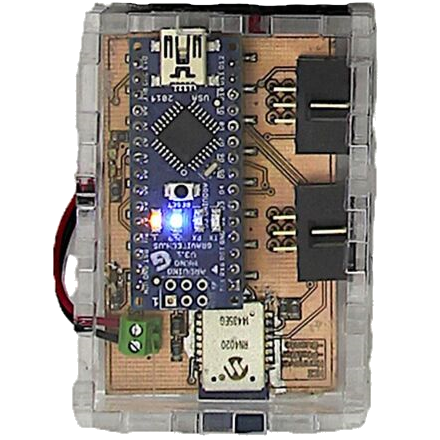
| Leitung: | Max Pfeiffer |
| Team: | Max Pfeiffer, Tim Dünte, Michael Rohs |
| Jahr: | 2016 |
| Ist abgeschlossen: | ja |
| Weitere Informationen | https://www2.hci.uni-hannover.de/research/ems_toolkit/ |
A Rapid Prototyping Toolkit for Generating and Testing Mobile Force Feedback with Electrical Muscle Stimulation
The Let Your Body Move ToolKit is a rapid prototyping toolkit for generating and testing mobile force feedback with electrical muscle stimulation. Developed by the Human-Computer Interaction group at the University of Hannover, the Toolkit is an open source project and the resources are online available at Bitbucket: Let Your Body Move Toolkit.
Overview
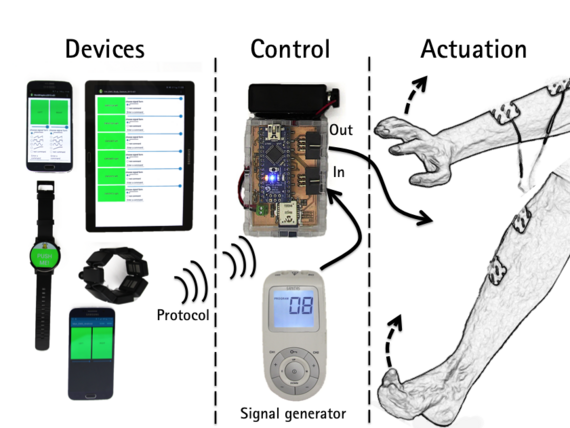
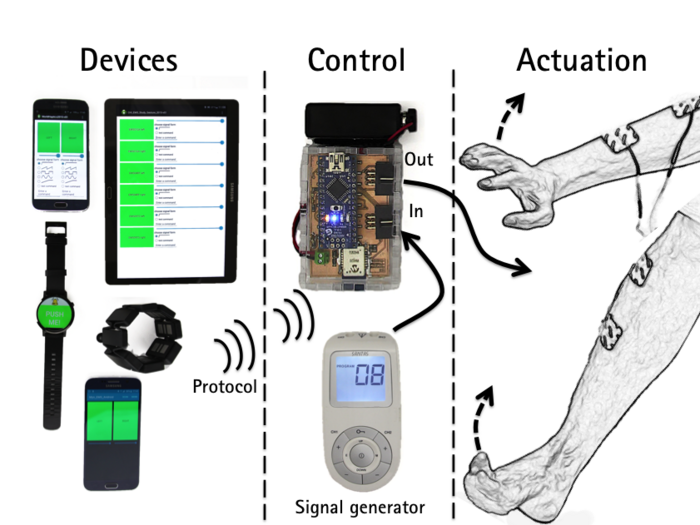
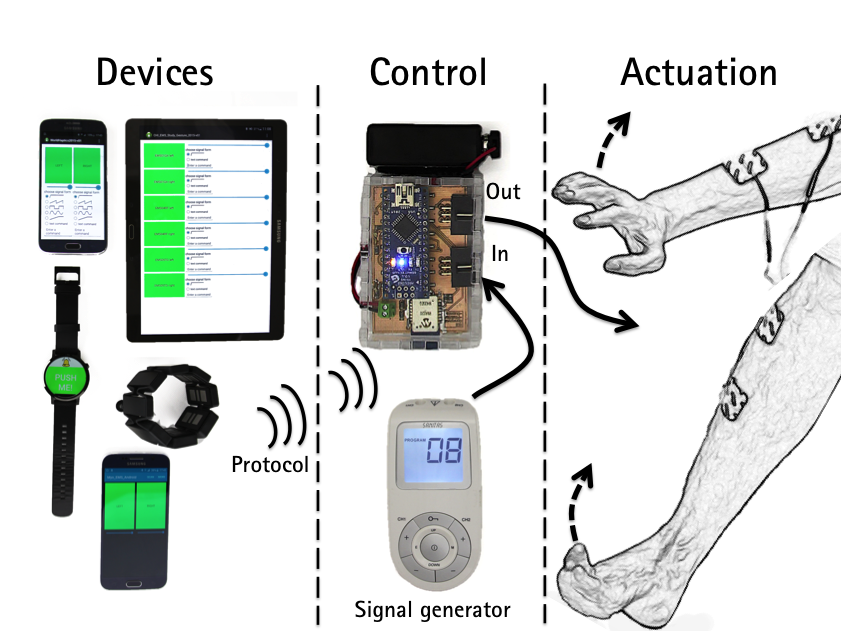
Concept of the Toolkit
Haptic feedback technology does not easily follow the trend of miniaturization. Electrical muscle stimulation (EMS) can close the gap between exoskeletons and vibration motors to deliver a wide range of tactile and force feedback. It is currently difficult to apply EMS in prototyping, as it requires in-depth knowledge and skills about hardware, software, and physiological characteristics. To simplify prototyping with EMS we present Let Your Body Move ToolKit, a toolkit for haptic prototyping in mobile and wearable situations
The EMS toolkit consists of (1) a hardware control module based on Arduino nano with a Bluetooth low-energy chip that integrates off-the-shelf EMS devices as signal generators, (2) a simple communication protocol to connect ordinary mobile devices, (3) a set of control applications that can serve as starting points for generating more complex applications and (4) a getting started tutorial to rebuild the hardware.
Hardware Control Module
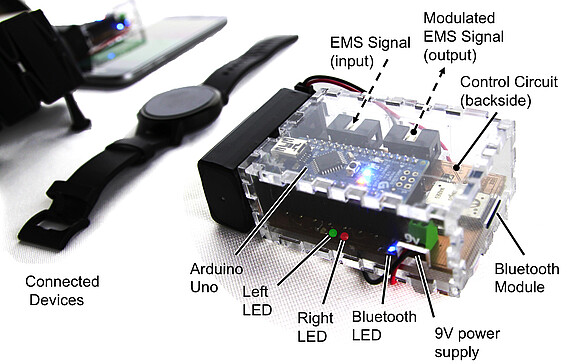
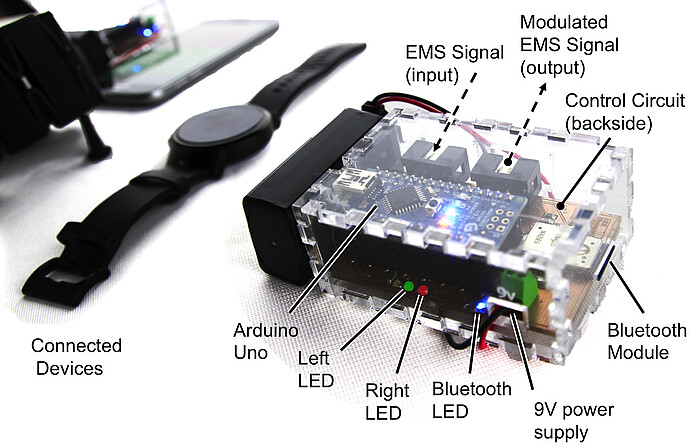
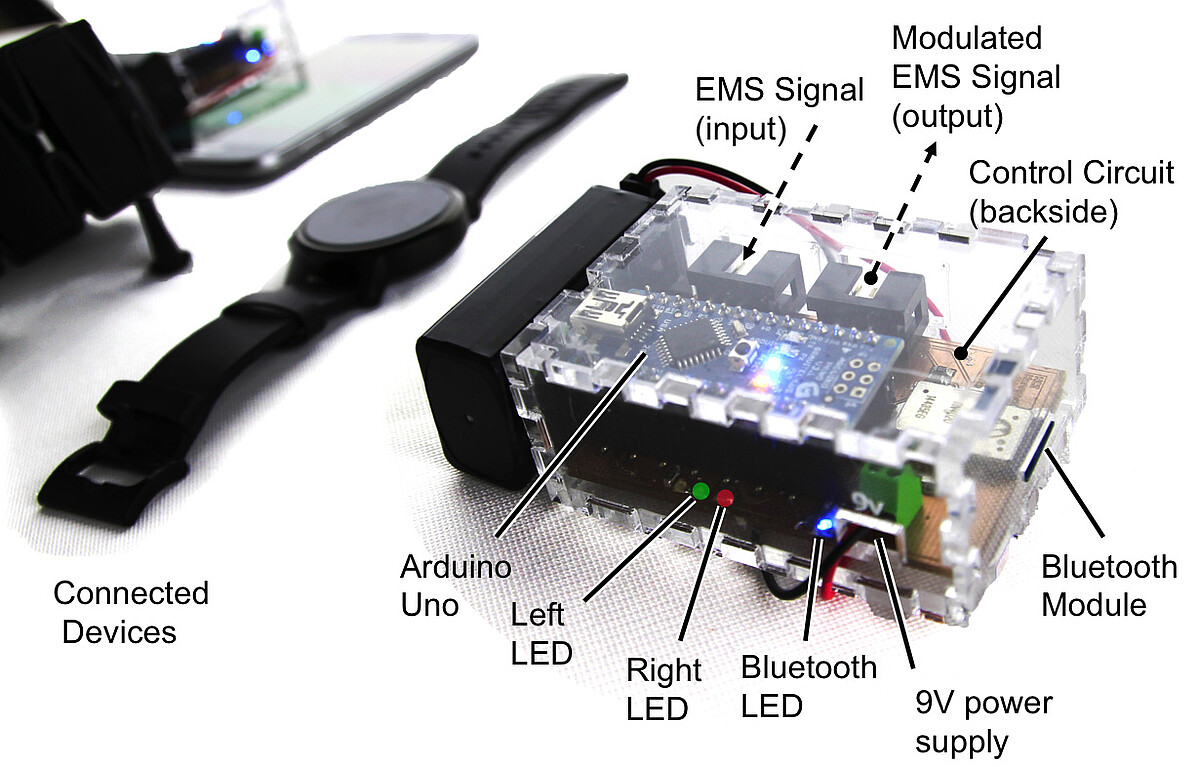
Function of the Control Module
The heart of our toolkit is an Arduino based control module. The control module can communicate over Bluetooth LE with any other Bluetooth LE device (e.g. a Smartphone). The communication protocol is readable and easy to understand. With the toolkit the time and strenght of an stimulation with EMS could be controlled. The toolkit is battery powered by an 9V battery.
For safety reasons the control circuit is galvanically isolated from the EMS circuit. The control module only decreases the strength of the EMS signal from the signal generator. The signal goes in, gets decreased and goes out to the electrodes, which are placed on the skin over the desired muscle.
One toolkit provides up to two independent channels. For applications with more controlled muscles a parallel usage of more than one toolkit is possible.
Resources
Getting started
Our project ist located at Bitbucket: Let Your Body Move Toolkit. We provide all resources that you need to build your own toolkit. The Toolkit is licensed under a modified MIT license. You can modify it and use it for your own projects. You will find the following resources in our repository:
- PCB layout files
- Circuit schematics
- Part list
- Software for the control module
- Sample Android apps like the <link typo3 research ems_toolkit wizardofoz-letyourbodymovetoolkit.apk>WizardOfOz application
Our wiki provides a getting started section for beginners to get familiar with the toolkit. The getting started explains how to build a toolkit in detail.
For more information please also read our paper Let Your Body Move: A Prototyping Toolkit for Wearable Force Feedback with Electrical Muscle Stimulation

